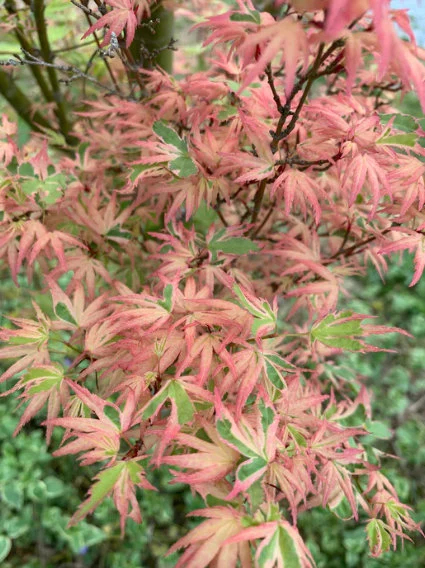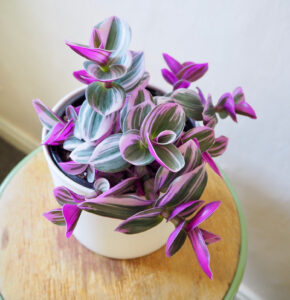The Pink Variegated Butterfly Maple (Acer palmatum) is a unique and beautiful tree known for its striking pink, cream, and green leaves that change throughout the seasons. It is often used for ornamental purposes due to its colorful and delicate foliage. Here’s a care guide for this lovely tree:
1. Light Requirements:
- Partial shade to full sun – While this maple can tolerate some direct sunlight, it generally thrives best with morning sun and afternoon shade. Too much direct sun, especially in hotter climates, can scorch the delicate leaves, causing them to lose their pink coloration.
2. Watering:
- Keep the soil evenly moist but not soggy. Water regularly, especially during dry periods.
- Ensure good drainage in the soil to prevent root rot.
- Water at the base of the tree to avoid getting water on the leaves, as prolonged moisture on the leaves can lead to fungal diseases.
3. Soil:
- Prefers well-draining, slightly acidic soil with a pH of 5.5-6.5.
- The soil should be rich in organic matter, so adding compost can help improve drainage and fertility.
- Avoid clay-heavy soils, as they can retain too much moisture and cause root problems.
4. Temperature:
- The Pink Variegated Butterfly Maple prefers moderate to cool climates.
- It thrives best in USDA hardiness zones 5-8. It can tolerate some frost but may need protection during severe winter conditions, especially in colder climates.
- In regions with hot summers, providing some afternoon shade can help protect the tree from stress.
5. Fertilizing:
- Fertilize during the growing season (spring to summer) with a balanced, slow-release fertilizer or an organic fertilizer like compost.
- Avoid fertilizing too late in the growing season, as this can encourage new growth that may be vulnerable to frost in the winter.
6. Pruning:
- Prune in late winter or early spring before new growth begins.
- Remove any dead, damaged, or crossing branches to improve the overall shape and health of the tree.
- Avoid heavy pruning, as this tree’s natural form is an essential part of its beauty.
7. Mulching:
- Apply a layer of mulch around the base of the tree to retain moisture, regulate soil temperature, and reduce weed growth.
- Keep mulch a few inches away from the trunk to prevent rot.
8. Pests and Diseases:
- This tree is generally pest-resistant but can be susceptible to aphids, scale insects, and Japanese beetles.
- Common diseases include leaf spot and root rot, especially if the soil is too wet.
- To prevent pests, check the tree regularly and use insecticidal soap or neem oil if needed.
9. Winter Care:
- Protect the tree in colder climates with burlap wraps or frost blankets to shield it from extreme cold or windburn.
- If planted in a pot, bring it indoors or place it in a sheltered location during winter to prevent frost damage.
10. Growth and Size:
- This is a slow-growing tree, and its size will depend on the environment and care. On average, it can grow up to 6-8 feet tall and wide, but it can sometimes reach up to 12 feet in ideal conditions.
- It works well in small gardens, as a focal point, or as an ornamental tree in containers.
The Pink Variegated Butterfly Maple is a stunning addition to any garden with its delicate and colorful leaves, and with proper care, it will continue to enhance your landscape for many years.


